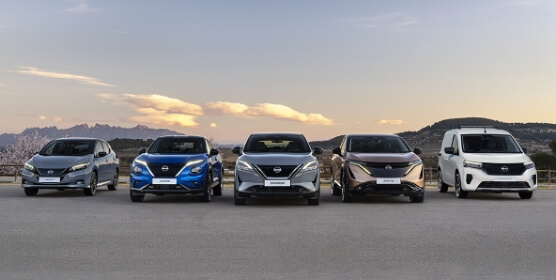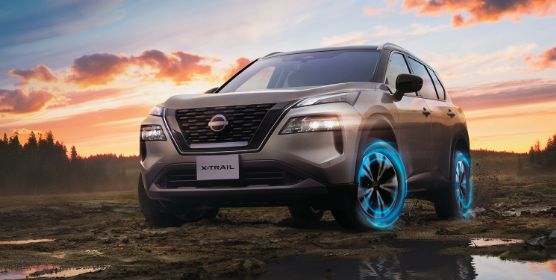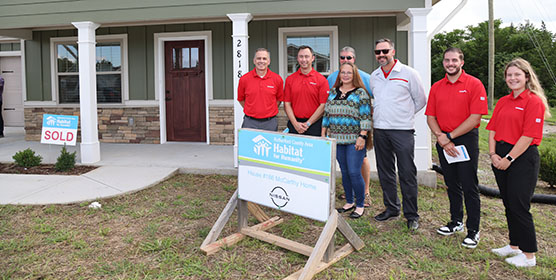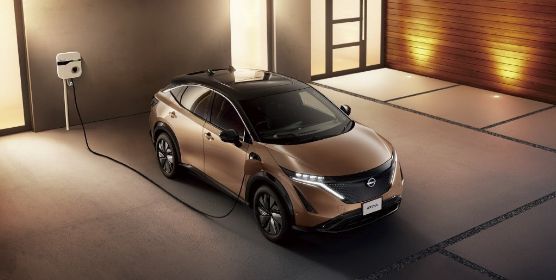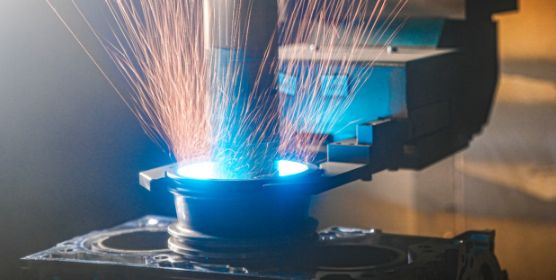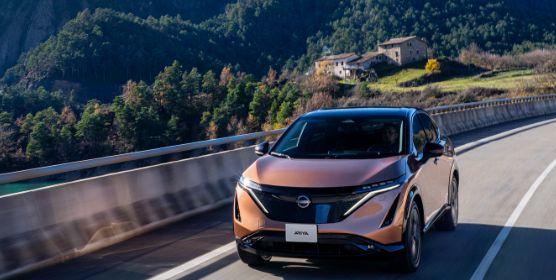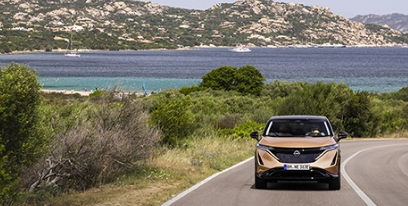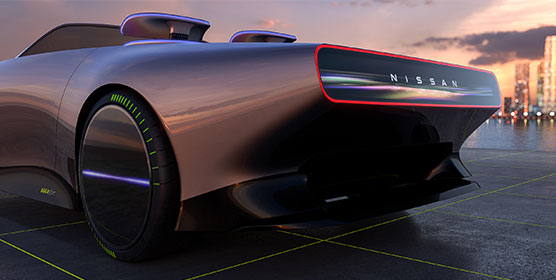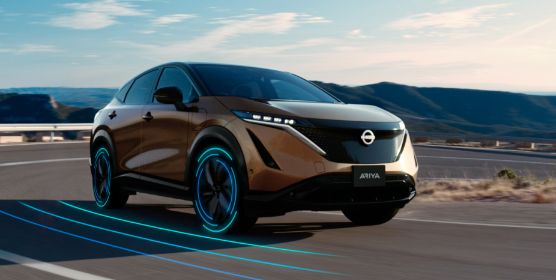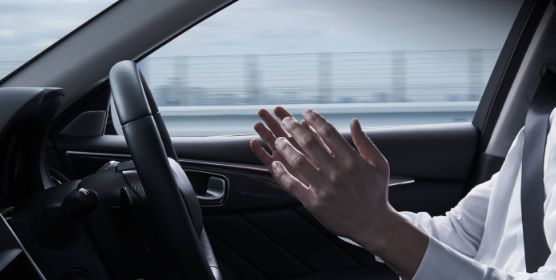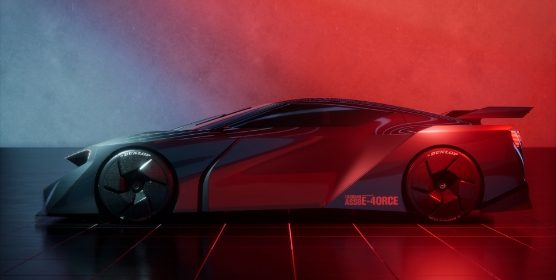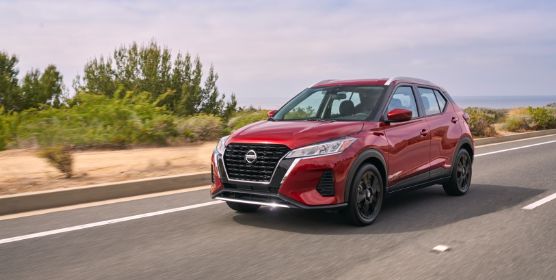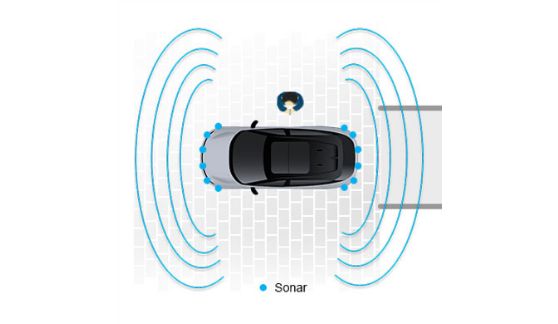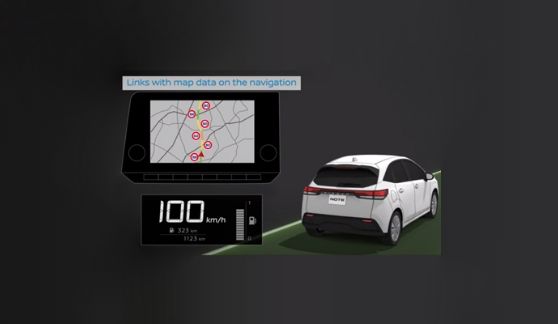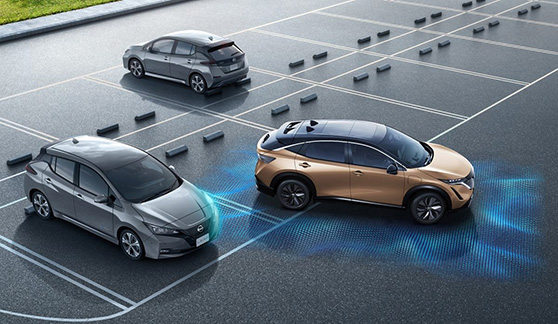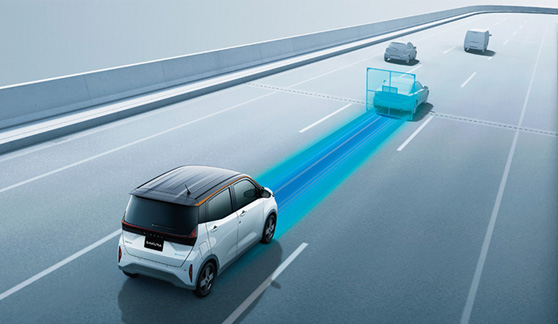ProPILOT 2.0
Driver assistance technology, combining navigated highway driving with hands-off single-lane driving capabilities
Designed for on-ramp to off-ramp (ramp-to-ramp) highway driving, the new system engages with the vehicle's navigation system to help maneuver the car according to a predefined route on designated roadways.*1 For the first time, the system also enables hands-off driving while cruising in a single lane.*2,3
To enable the latest functions of the new system, drivers must first set their destination in the navigation system, creating a predefined travel route. Once the car enters the highway, the new system's navigated driving becomes available.
Upon activation using a predefined route, the system will assist the driver with traveling on a multi-lane highway until reaching the highway exit on a predefined route - helping to handle passing, lane diversions and lane exiting.
The new ProPILOT also enables hands-off driving while cruising in a given lane. When the vehicle approaches a road divide, or when passing a slower vehicle is possible, the system judges the appropriate timing of branching off or passing based on information from the navigation system and 360-degree sensing. Intuitive audio and visual guidance is given to the driver, who is prompted to put both hands on the steering wheel and confirm the start of these operations with a switch.
By incorporating high-precision satellite positioning technology*4, the system achieves accurate lane-changing support even in a complicated road environment such as highways with many lanes or which run adjacent to local roads.
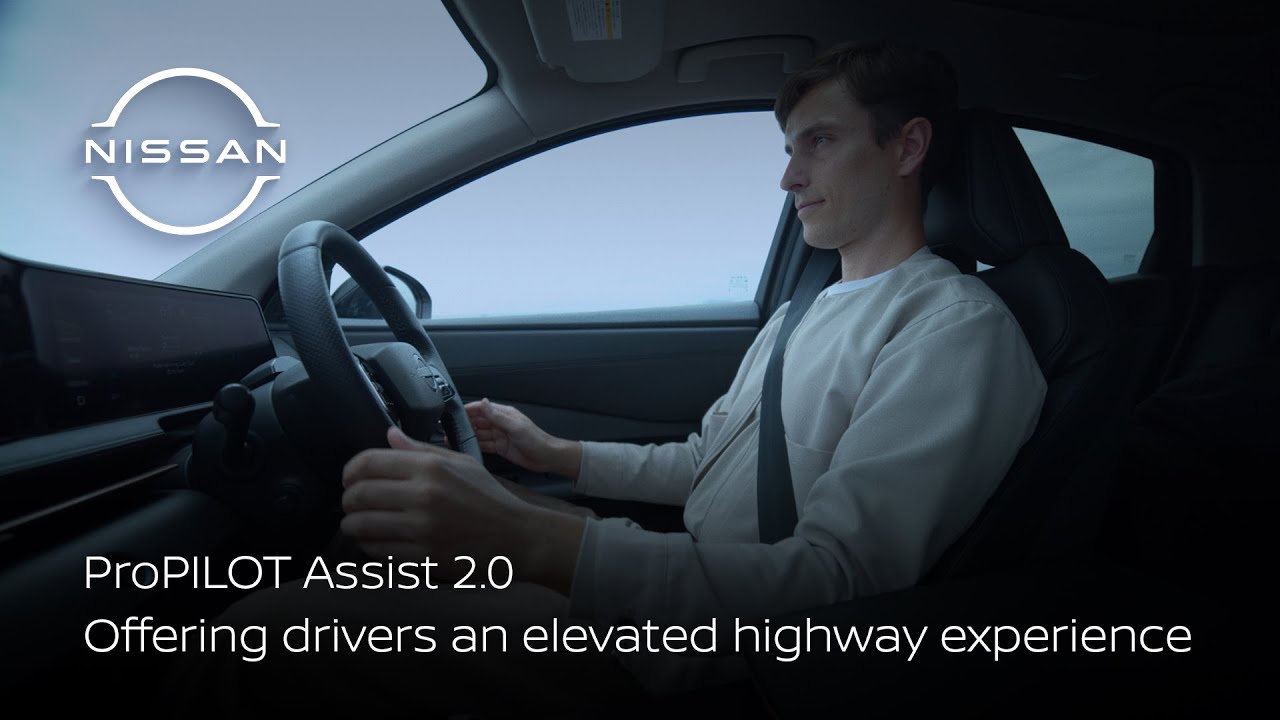
- A national expressway as prescribed by the National Expressway Act. A limited highway as prescribed by the Road Act.
- Hands-off driving is possible when driving in a single lane, on the condition that the driver remains attentive on the road ahead and is prepared to immediately take manual control of the steering wheel when conditions of the road, traffic and vehicle require it.
- The hands-off feature is not available in tunnels where a GPS signal cannot be established, on expressways that have two-way traffic, on winding roads, in tollgate areas or merging lanes. When entering a road section where hands-off driving is not available, the system will alert in advance so the driver can take manual control of vehicle steering.
- This technology will be adopted from Nissan Ariya (Japan and U.S. models only).
How the technology works
Audio cues and visual notifications alert the driver when the navigated driving feature becomes available (upon entering the highway and using a predefined route set in the navigation system).
The driver can start navigated driving by operating a switch. Once activated, the system will help drive the vehicle in the center of a given lane and maintain a certain distance with the preceding vehicle, keeping within a speed set by the driver.
Hands-off driving is possible when driving in a single lane as long as the driver's attention is on the road ahead and the driver is prepared to take manual control of the steering wheel when conditions of the road, traffic and vehicle require it.
If the preceding vehicle is driving more slowly than the speed set by the driver, and the system detects that it can pass, the driver will be notified through audio and visual guidance. The driver can agree to pass by placing both hands on the steering wheel and operating a switch. Upon the driver's confirmation, the vehicle will smoothly move into the passing lane. Once it has passed the slower vehicle and the system has determined that it is possible to return to the driving lane, the system requests confirmation from the driver to bring the vehicle back into the original lane.
When wishing to initiate a lane change, the driver places both hands on the steering wheel and activates the turn signal. The vehicle will change lanes once the system has determined that a lane change is possible.
When the vehicle approaches the highway exit of a predefined route, audio and visual guidance is given to notify the driver that navigated driving is about to end. Once the vehicle reaches the highway exit ramp, navigated driving is disengaged and the driver takes full control of the vehicle.
Navigated highway driving function
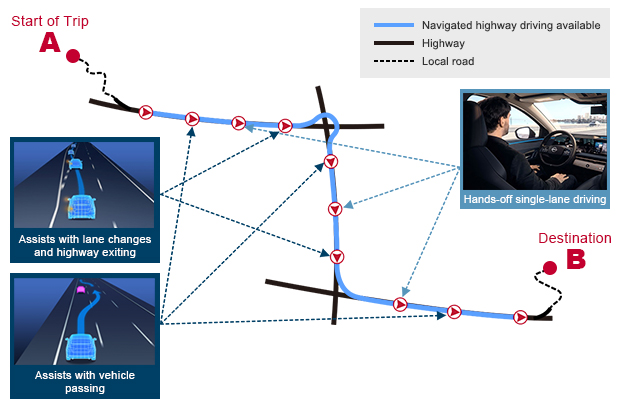
Technology Configuration
The world's first intelligent navigated highway driving with 3D high definition map data, 360-degree sensing, intelligent interface and high-precision satellite positioning technology.
1. 3D high definition map data
The map data consists of highway road structure information at the centimeter level and includes road curvature, slope, all lane marking information, speed limits and signage.
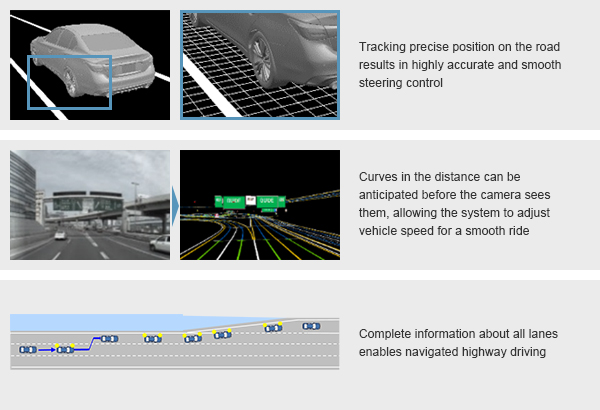
2. 360-degree sensing
Detects lane markers, signs and surrounding vehicles using 7 cameras, 5 radar sensors and 12 sonar sensors.
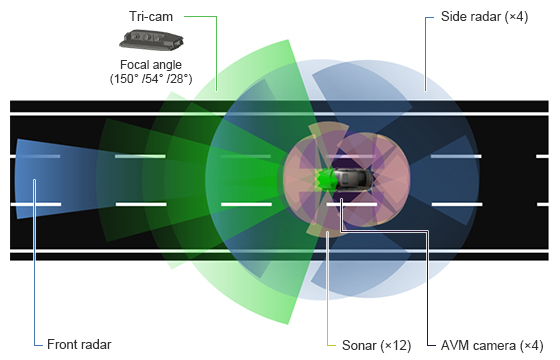
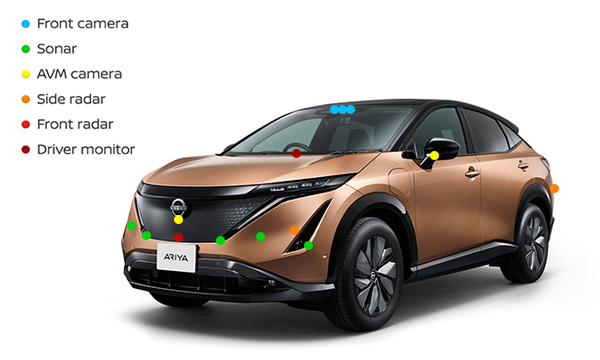
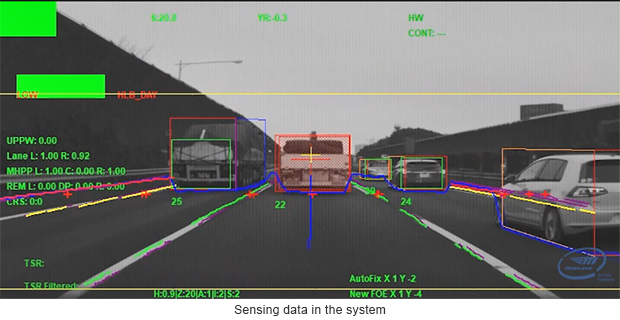
3. Intelligent interface
Assesses the road, surrounding conditions and system control in real time and determines lane change timing interactively.
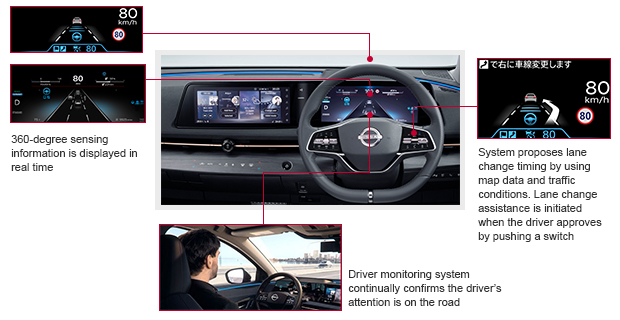
4. High-Precision Satellite Positioning Technology
When referring to 3D high definition map data, the system uses the vehicle position information measured by Global Navigation Satellite Systems (GNSS)*5. Normally positioning data from GNSS has a margin for error of 10 to 15m, but the system is able to identify the vehicle’s lane accurately with centimeter level high-precision positioning technology used in surveying, etc.
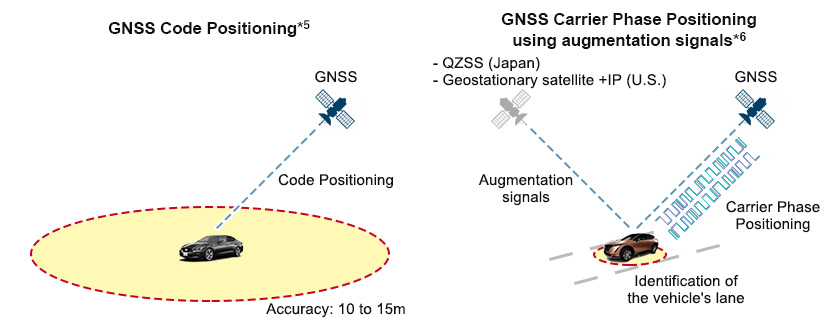
- Global Navigation Satellite System (GNSS) is the global positioning satellite system, mainly represented by GPS
- Code Positioning is a positioning method using information transmitted by radio waves from satellites
- Carrier Phase Positioning is a method of increasing accuracy by analyzing the actual radio waves transmitted by satellites



